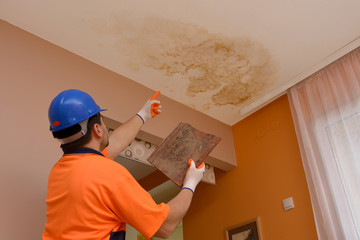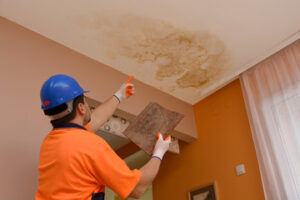Plumbing North Wales PA is the system of pipes, fixtures, and appliances that provide clean water and remove waste from a facility. Plumbers install, repair, and maintain these systems. They also interpret blueprints and building codes to plan plumbing systems for new construction or renovation projects.
To become a plumber, you will need a mix of math skills, geometry, and physics knowledge, and basic computer literacy. Explore the Trades recommends taking courses that teach these basics before enrolling in a program.
Valves are important to the proper function of any piping system, as they control and regulate fluid pressure levels. They also prevent backflow, which can contaminate water supplies and cause serious health problems. This is why it’s important to have premium-quality valves that are designed for the specific requirements of a piping system.
There are many different types of valves, each with its own unique design and operating characteristics. These differences are often dictated by the type of fluid that will be transported through the valve, as well as the operating conditions and pressures under which the valve will be used. For example, some valves are designed for use with low-viscosity fluids, while others are intended to transport more viscous liquids or gases.
A typical valve consists of a body, bonnet, and packing. The body is the pressure-containing shell of the valve, while the bonnet is a seal that surrounds the opening for the stem. The packing is a deformable material that provides a tight seal around the stem. The handle of the valve connects to the stem via the packing, and it is this handle that opens or closes the valve.
Choosing the right valves for a piping process can be challenging, as there are many factors to consider, including the valve’s design, size, and actuation method. For example, valves typically have threaded end connections that are compatible with the piping systems to which they will be attached. The choice of end connection can also influence the overall functionality of a valve, as it may impact how the valve handles and how easily it is installed.
One of the most common problems with valves is sediment buildup in pipes. This can cause blockages, which reduces water flow and can lead to other problems in the plumbing system. To prevent this, it’s a good idea to have your pipes flushed regularly and to install a water softener.
Other common issues with valves include corrosion, wear and tear, and leaks. These problems can be caused by a number of factors, including incorrect installation, poor quality materials, and overuse. To prevent these problems, it’s a good idea to always work with a professional when installing or working on plumbing systems.
Pipes and Fittings
Pipes carry water, gas and other liquids through your home’s plumbing system. They can be made from many materials including copper, galvanized steel or PVC (polyvinyl chloride). Copper and copper tubing are typically soldered together in order to join them, though some plumbers choose to use solder-free alternatives such as solderless joints and compression fittings. When selecting pipes and fittings, it’s important to consider the system’s pressure rating, the environment in which it will be used, and how long you want the pipe to last.
There are numerous types of pipe fittings to manipulate the conveyance of liquids, such as elbows, tees, reducers and unions. When choosing your fittings, always ensure that they are compatible with your piping system’s fluid, as incompatibility could lead to leakage or damage.
Elbows: Generally shaped like the letter “E”, these are commonly used for changing the direction of your pipe’s flow, and come in various angles such as 90 degrees, 45 degrees or 22.5 degrees. Street elbows are an example of this type of pipe fitting, and feature female slip-to-female threads on each end – they are designed to make tight turns in small spaces, thereby eliminating the need for a nipple.
Tees: Shaped like the letter T, these are used to combine or divide fluid flow in a line, and come in various sizes, materials and finishes. Equal tees are the most common, and are sized to match the diameter of the incoming and outgoing lines. Alternatively, you can use a reducing tee, which makes a gradual change in diameter.
Cross: Unlike tees, which connect multiple lines, crosses have one inlet and three outlets, and are generally used for fire water sprinklers. You can also use a barred tee, which features restriction bars across the inlet to prevent debris from entering the system, or a wye tee, which lowers friction and turbulence by connecting two lines at a 45 degree angle.
A coupling is a type of pipe fitting that joins two straight sections of piping with a seal. Couplings can be attached using welds, threads or solvent welding, and are usually inserted into an opening on either side of the pipe to create a tight fit. A grooved coupling consists of four parts: a grooved pipe, a gasket encompassed in a coupling housing, and nuts and bolts that secure the assembly.
Drainage System
Drainage systems are essential in both the building and the outdoor environment. They keep wastewater out of buildings and prevent water damage as well as health hazards, such as mold and mildew. Drainage systems are composed of a network of pipes that remove excess water, usually into a sewer system or septic tank. It is important to understand how drainage systems work in order to maintain them properly.
The plumbing drainage system does two things: it carries waste water away from a building, and it transports clean drinking water. The drain system must be able to dispose of the wastewater from the kitchen, bathrooms, laundry room, and other rooms without contaminating the drinking water supply or leaking sewage into the home or business. This is a complex task because the wastewater contains food particles, cleaning chemicals, and toxins that can cause illness in humans if ingested. The drain plumbing also has to remove the wastewater without becoming clogged or slowing down, which can lead to a buildup of pressure that could rupture a pipe.
To ensure that the drains remain clear, the plumbing drainage system contains several components, including traps, vents, and grates. Traps are curved sections of pipe that retain a small amount of water and create a seal to keep sewer gases from entering the building. Vents are pipes that allow air into the drainage system to help wastewater flow smoothly. They are attached to the drain lines at each fixture and protrude through the roof. They are capped to keep animals and rain from getting in while allowing air to flow through.
Drainage grates cover the drain openings to protect them from debris and sand that may enter the plumbing drains. These covers are especially important when water is flowing in heavy rain because debris can enter the drains and cause them to clog or overflow, leading to a variety of problems. In addition, a clogged drain can produce unpleasant odors and attract pests, such as mosquitoes. Regular inspections and maintenance of the plumbing drainage system can help to reduce odors, eliminate clogs, and protect the pipes from bursting or developing leaks.
Water Heater
The water heater is the plumbing system’s most important appliance, heating incoming cold water and keeping it hot so sinks, showers, tubs and laundry can produce warm or hot water when needed. It typically lives in the basement, garage or utility closet in your home and is powered by electricity, natural gas, propane gas, oil or solar energy. If it is not operating properly, this can have a direct impact on the quality of your water and your home’s plumbing system overall.
The most common water heater in North American homes is a standard tank-type unit, holding 20 to 80 gallons. These units use a combination of electrical, gasoline or diesel-fueled gas to heat water and may operate via an electric thermostat, a gas burner, a pilot light, a thermocouple sensor or other components.
When a water heater is working correctly, the unit produces enough hot water for sinks, showers, bathtubs and washing machines to operate normally at 9.5 L (2-5 US gal) per minute or less. Occasionally, you will encounter low water pressure from your water heater. The problem could be as simple as a kink in the flexible water conduit that connects to your hot water heater or it might be due to a build-up of sediment in the unit.
Minerals (scale and calc) separate from water molecules as it heats and, if left untreated, can create a layer of solidified deposits within your water heater called sediment. This can reduce the efficiency of your water heater as it tries to maintain the correct temperature of the water it is heating, and it can also negatively affect water pressure from your hot water fixtures.
To help prevent this, drain your water heater periodically to flush out the sediment. Turn off the gas or power to the water heater and connect a long hose to the drain valve, which is typically at the bottom of the tank. Open the drain valve and allow the water to flow out of the tank until it is clear. This should be done at least every 6 months, if not more often.



 Even small leaks can cause serious damage. Water spreads quickly, soaking into walls, floors, soft furnishings, wooden doors, and window frames. It can also impact electrical systems. When water is allowed to stay too long, mold can grow and lead to health issues. If you don’t deal with water damage immediately, you may not even realize you have a problem until it’s too late. The best way to avoid mold is to have a water damage restoration company come out as quickly as possible.
Even small leaks can cause serious damage. Water spreads quickly, soaking into walls, floors, soft furnishings, wooden doors, and window frames. It can also impact electrical systems. When water is allowed to stay too long, mold can grow and lead to health issues. If you don’t deal with water damage immediately, you may not even realize you have a problem until it’s too late. The best way to avoid mold is to have a water damage restoration company come out as quickly as possible.